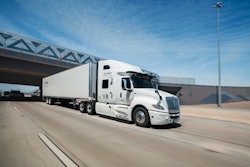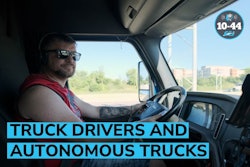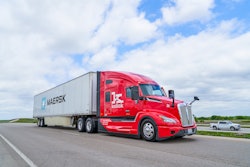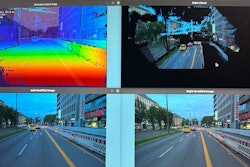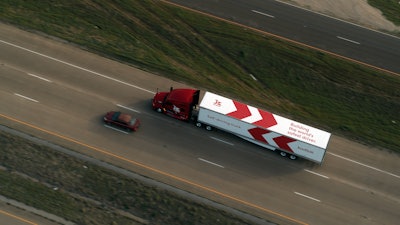
While they may not be all that noticeable, autonomous trucks are decked out with sensors, cameras, LiDARs and radars to give them a view of the environment around them. But that view can only go so far. Just like a human driver, that AV may not be able to see debris in the roadway miles in advance.
The Texas Department of Transportation (TxDOT) is working to change that to improve safety along its roadways, where several autonomous truck developers like Kodiak and Aurora have already begun testing.
That’s where Cavnue comes in. TxDOT recently awarded Cavnue a contract to implement an autonomous trucking corridor with its digital infrastructure platform along a 21-mile stretch of State Highway 130, between SH71 and SH45 North, in the greater Austin area. The company will install a network of sensors, including cameras and edge computing infrastructure, that will monitor real-time traffic and roadway conditions, infer what is happening on the road using artificial intelligence, and share those insights with vehicles on the road and TxDOT through edge and cloud communications to reduce the complexity of SH130 for autonomous trucks.
Cavnue CEO Tyler Duvall said the company’s technology and infrastructure complement the sensors on AVs.
“Let's say the truck’s sensors can see 200 meters ahead, or 150 or 250, whatever it is; it can't see 500 meters ahead, a mile ahead, or two miles ahead, or five miles ahead, and there are huge problems with that because it means that there's a lot of risk happening beyond the line of sight of the vehicle,” he said. “We're the sensor that gives you look-ahead information beyond what your own vehicle can see.”
Duvall said Cavnue has been working with TxDOT to identify areas along the roadway where its sensor kits – poles spaced every 200 meters – can be installed. Once those locations are known, the company can move forward with deployment in which those sensor kits will observe roadway conditions – debris, stalled vehicles, wildlife, pavement issues, vehicle operating speeds, etc. Those sensors can observe and communicate to TxDOT, for example, that a tire is in the road at mile marker 42, causing vehicles that are moving at 75 miles an hour to abruptly swerve or brake. On the software side, the Cavnue platform’s AI model gets smarter the more observations it makes, like identifying a tire versus a paper bag, Duvall said.
Cavnue can also communicate that information to the vehicles themselves.
“What we're going to do with the project is partner with those companies (like Kodiak and Aurora) and with the state of Texas to test out these improvements that you can get from these advanced sensing systems on the roadway,” Duvall said. “Let's get the full understanding of the roadway, and then ultimately we can communicate it to their own cloud platform. All of these advanced companies have cloud-based platforms that they run, and they ingest in those platforms all kinds of information.”
Bringing these insights to the trucks improves safety, which Duvall said was a big driver for TxDOT in launching this project. Texas has some of the largest and most heavily trafficked highways in the country, and many trucks use SH130 to bypass the highly congested I-35 that runs from Dallas to Austin to San Antonio. Duvall said this project is a big push for TxDOT to reduce fatalities.
[RELATED: ADAS uptake key in reducing large truck crashes]
“Safety is priority number one at TxDOT,” said Austin Deputy District Engineer Mike Arellano. “The largest opportunity to reduce crashes is by improving the driver experience by broadcasting digital roadway information to on-board automated systems to help advanced and automated trucks navigate the roadway environment safely and more efficiently.”
Duvall said this infrastructure and technology will give AV trucks, which need longer reaction times, more time to ingest insights about what’s on the road ahead to give them more time to react.
“They can only see what they can see or what somebody else tells them, and that's where we want to basically create a new model,” he said.
But it’s a new model using existing roadways.
Duvall said the U.S.’s existing infrastructure wasn’t made for the advancement into the autonomous world. Cavnue’s infrastructure and technology aim to accelerate the safe and efficient deployment of AVs by updating, instead of replacing, what’s already there.
“This approach is hopefully faster than building new roadways,” Duvall said. “We can put sensors up on roadways in months; it doesn't take years.”
He said Cavnue’s partnership with TxDOT enables the transportation agency to evaluate this integrated physical and digital infrastructure for future use cases as well.
The SH130 Smart Freight Corridor will serve as a live testing ground of Texas SMARTTrack, a transportation technology evaluation and certification center developed with regional agencies, including TxDOT, the Capital Area Metropolitan Planning Organization and the Center for Transportation Research at the University of Texas at Austin. The insights that TxDOT gains from this project will support the safe and effective deployment of advanced and self-driving trucking operations to a broader network of roadways along additional key travel corridors in Texas in the future.
[RELATED: Pilot announces partnership with autonomous truck company]
Similar to battery electric, the infrastructure for AVs isn’t up to snuff. The trucking industry has been calling for public-private partnerships to make it happen, and Duvall said this partnership is representative of that.
“It's a transformational moment,” he said. “It's a new commercial model for the private sector to partner with government and bring leading technology into government in a much faster and more efficient way.”


